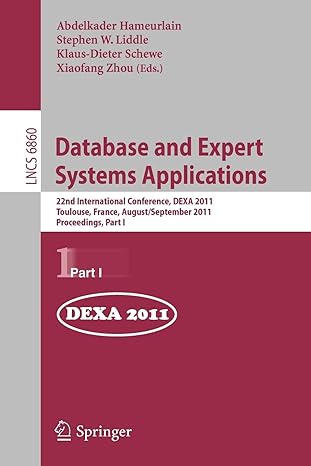Answered step by step
Verified Expert Solution
Question
1 Approved Answer
Please complete the code in python. Also, please use linked list to solve the problem I have finished part 1. I need help in part
Please complete the code in python. Also, please use linked list to solve the problem
I have finished part 1. I need help in part 2
Thank you very much!
The requirement is below:
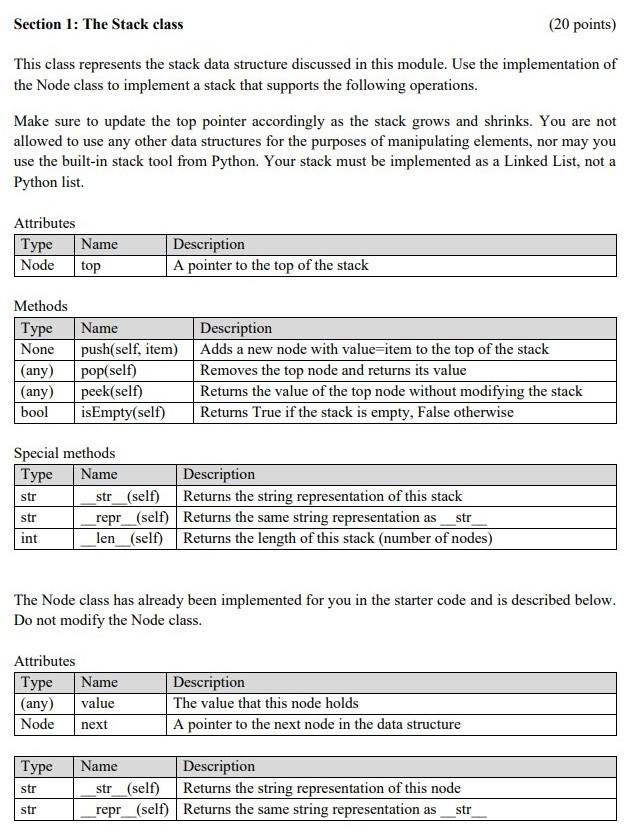
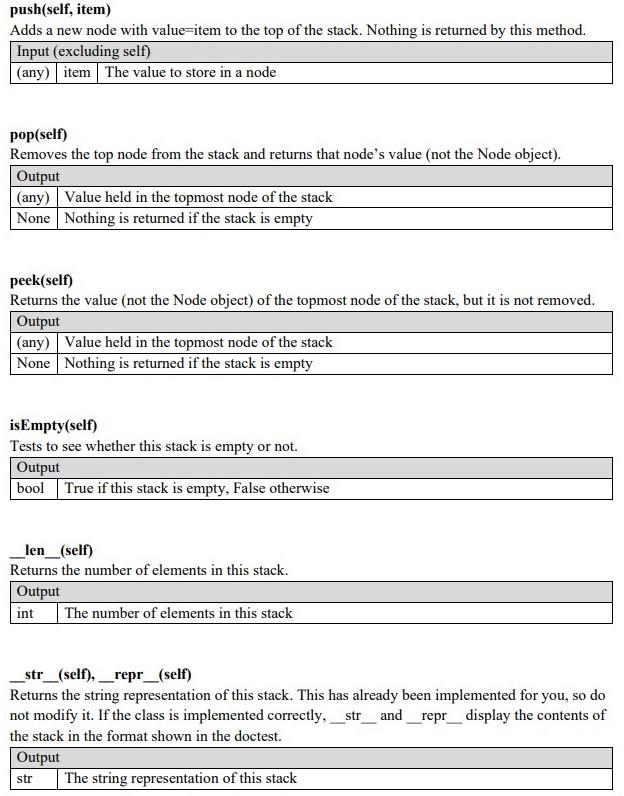
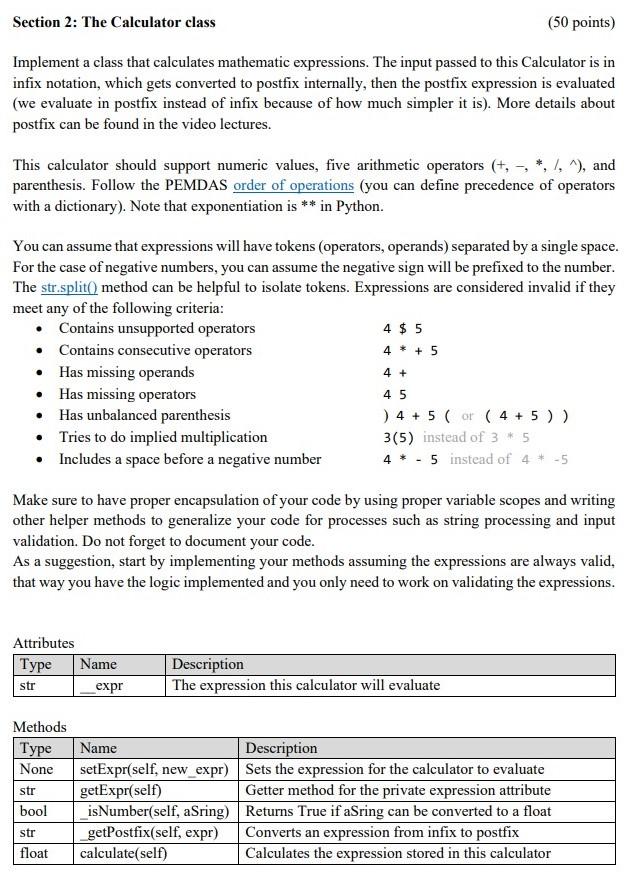
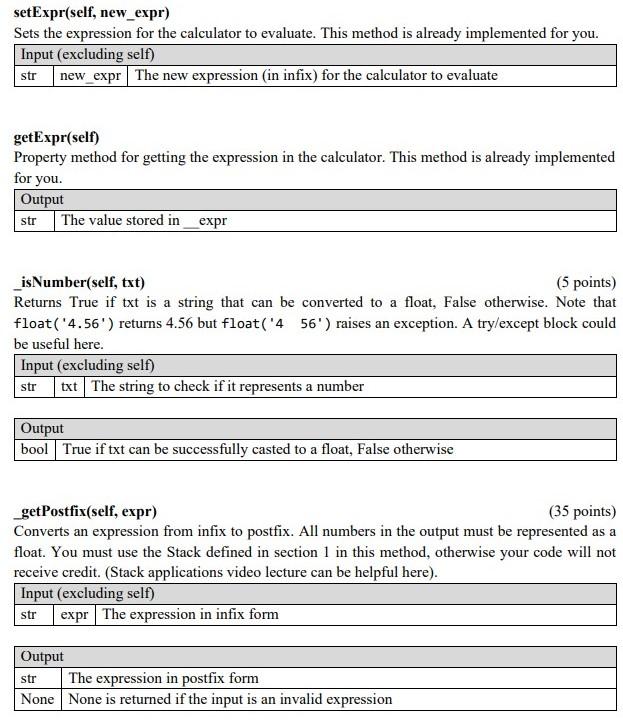
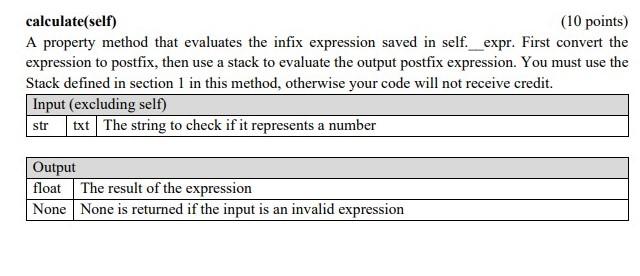
Starter code is Below:
class Node: def __init__(self, value): self.value = value self.next = None def __str__(self): return "Node({})".format(self.value) __repr__ = __str__ # =============================================== Part I ============================================== class Stack: ''' >>> x=Stack() >>> x.pop() >>> x.push(2) >>> x.push(4) >>> x.push(6) >>> x Top:Node(6) Stack: 6 4 2 >>> x.pop() 6 >>> x Top:Node(4) Stack: 4 2 >>> len(x) 2 >>> x.peek() 4 ''' def __init__(self): self.top = None def __str__(self): temp = self.top out = [] while temp: out.append(str(temp.value)) temp = temp.next out = ' '.join(out) return ('Top:{} Stack: {}'.format(self.top, out)) __repr__ = __str__ def isEmpty(self): # YOUR CODE STARTS HERE pass def __len__(self): # YOUR CODE STARTS HERE pass def push(self, value): # YOUR CODE STARTS HERE pass def pop(self): # YOUR CODE STARTS HERE pass def peek(self): # YOUR CODE STARTS HERE pass # =============================================== Part II ============================================== class Calculator: def __init__(self): self.__expr = None @property def getExpr(self): return self.__expr def setExpr(self, new_expr): if isinstance(new_expr, str): self.__expr = new_expr else: print('setExpr error: Invalid expression') return None def _isNumber(self, txt): ''' >>> x=Calculator() >>> x._isNumber(' 2.560 ') True >>> x._isNumber('7 56') False >>> x._isNumber('2.56p') False ''' # YOUR CODE STARTS HERE pass def _getPostfix(self, txt): ''' Required: _getPostfix must create and use a Stack for expression processing >>> x=Calculator() >>> x._getPostfix('2 ^ 4') '2.0 4.0 ^' >>> x._getPostfix('2') '2.0' >>> x._getPostfix('2.1 * 5 + 3 ^ 2 + 1 + 4.45') '2.1 5.0 * 3.0 2.0 ^ + 1.0 + 4.45 +' >>> x._getPostfix('2 * 5.34 + 3 ^ 2 + 1 + 4') '2.0 5.34 * 3.0 2.0 ^ + 1.0 + 4.0 +' >>> x._getPostfix('2.1 * 5 + 3 ^ 2 + 1 + 4') '2.1 5.0 * 3.0 2.0 ^ + 1.0 + 4.0 +' >>> x._getPostfix('( 2.5 )') '2.5' >>> x._getPostfix ('( ( 2 ) )') '2.0' >>> x._getPostfix ('2 * ( ( 5 + -3 ) ^ 2 + ( 1 + 4 ) )') '2.0 5.0 -3.0 + 2.0 ^ 1.0 4.0 + + *' >>> x._getPostfix ('( 2 * ( ( 5 + 3 ) ^ 2 + ( 1 + 4 ) ) )') '2.0 5.0 3.0 + 2.0 ^ 1.0 4.0 + + *' >>> x._getPostfix ('( ( 2 * ( ( 5 + 3 ) ^ 2 + ( 1 + 4 ) ) ) )') '2.0 5.0 3.0 + 2.0 ^ 1.0 4.0 + + *' >>> x._getPostfix('2 * ( -5 + 3 ) ^ 2 + ( 1 + 4 )') '2.0 -5.0 3.0 + 2.0 ^ * 1.0 4.0 + +' # In invalid expressions, you might print an error message, but code must return None, adjust doctest accordingly # If you are veryfing the expression in calculate before passing to postfix, this cases are not necessary >>> x._getPostfix('2 * 5 + 3 ^ + -2 + 1 + 4') >>> x._getPostfix('2 * 5 + 3 ^ - 2 + 1 + 4') >>> x._getPostfix('2 5') >>> x._getPostfix('25 +') >>> x._getPostfix(' 2 * ( 5 + 3 ) ^ 2 + ( 1 + 4 ') >>> x._getPostfix(' 2 * ( 5 + 3 ) ^ 2 + ) 1 + 4 (') >>> x._getPostfix('2 * 5% + 3 ^ + -2 + 1 + 4') ''' # YOUR CODE STARTS HERE postfixStack = Stack() # method must use postfixStack to compute the postfix expression pass @property def calculate(self): ''' Required: calculate must call postfix calculate must create and use a Stack to compute the final result as shown in the video lecture >>> x=Calculator() >>> x.setExpr('4 + 3 - 2') >>> x.calculate 5.0 >>> x.setExpr('-2 + 3.5') >>> x.calculate 1.5 >>> x.setExpr('4 + 3.65 - 2 / 2') >>> x.calculate 6.65 >>> x.setExpr('23 / 12 - 223 + 5.25 * 4 * 3423') >>> x.calculate 71661.91666666667 >>> x.setExpr(' 2 - 3 * 4') >>> x.calculate -10.0 >>> x.setExpr('7 ^ 2 ^ 3') >>> x.calculate 5764801.0 >>> x.setExpr(' 3 * ( ( ( 10 - 2 * 3 ) ) )') >>> x.calculate 12.0 >>> x.setExpr('8 / 4 * ( 3 - 2.45 * ( 4 - 2 ^ 3 ) ) + 3') >>> x.calculate 28.6 >>> x.setExpr('2 * ( 4 + 2 * ( 5 - 3 ^ 2 ) + 1 ) + 4') >>> x.calculate -2.0 >>> x.setExpr(' 2.5 + 3 * ( 2 + ( 3.0 ) * ( 5 ^ 2 - 2 * 3 ^ ( 2 ) ) * ( 4 ) ) * ( 2 / 8 + 2 * ( 3 - 1 / 3 ) ) - 2 / 3 ^ 2') >>> x.calculate 1442.7777777777778 # In invalid expressions, you might print an error message, but code must return None, adjust doctest accordingly >>> x.setExpr(" 4 + + 3 + 2") >>> x.calculate >>> x.setExpr("4 3 + 2") >>> x.calculate >>> x.setExpr('( 2 ) * 10 - 3 * ( 2 - 3 * 2 ) )') >>> x.calculate >>> x.setExpr('( 2 ) * 10 - 3 * / ( 2 - 3 * 2 )') >>> x.calculate >>> x.setExpr(' ) 2 ( * 10 - 3 * ( 2 - 3 * 2 ) ') >>> x.calculate # For extra credit only. If not attemped, these cases must return None >>> x.setExpr('( 3.5 ) ( 15 )') >>> x.calculate 52.5 >>> x.setExpr('3 ( 5 ) - 15 + 85 ( 12 )') >>> x.calculate 1020.0 >>> x.setExpr("( -2 / 6 ) + ( 5 ( ( 9.4 ) ) )") >>> x.calculate 46.666666666666664 ''' if not isinstance(self.__expr, str) or len(self.__expr) Section 1: The Stack class (20 points) This class represents the stack data structure discussed in this module. Use the implementation of the Node class to implement a stack that supports the following operations. Make sure to update the top pointer accordingly as the stack grows and shrinks. You are not allowed to use any other data structures for the purposes of manipulating elements, nor may you use the built-in stack tool from Python. Your stack must be implemented as a Linked List, not a Python list. Attributes Type Name Node Description A pointer to the top of the stack top Methods Type Name Description None push(self, item) Adds a new node with value=item to the top of the stack (any) pop(self) Removes the top node and returns its value (any) peek(self) Returns the value of the top node without modifying the stack bool isEmpty(self) Returns True if the stack is empty, False otherwise Special methods Type Name Description str str_(self) Returns the string representation of this stack str repr_(self) Returns the same string representation as _str_ len_(self) Returns the length of this stack (number of nodes) int The Node class has already been implemented for you in the starter code and is described below. Do not modify the Node class. Attributes Type Name (any) value Node next Description The value that this node holds A pointer to the next node in the data structure Type str Name Description str_(self) Returns the string representation of this node repr_(self) Returns the same string representation as str str push(self, item) Adds a new node with value=item to the top of the stack. Nothing is returned by this method. Input (excluding self) (any) item The value to store in a node pop(self) Removes the top node from the stack and returns that node's value (not the Node object). Output (any) Value held in the topmost node of the stack None Nothing is returned if the stack is empty peek(self) Returns the value (not the Node object) of the topmost node of the stack, but it is not removed. Output (any) Value held in the topmost node of the stack None Nothing is returned if the stack is empty isEmpty(self) Tests to see whether this stack is empty or not. Output bool True if this stack is empty, False otherwise len_(self) Returns the number of elements in this stack. Output The number of elements in this stack int str_(self), _repr_(self) Returns the string representation of this stack. This has already been implemented for you, so do not modify it. If the class is implemented correctly, _str_and_repr_display the contents of the stack in the format shown in the doctest. Output str The string representation of this stack Section 2: The Calculator class (50 points) Implement a class that calculates mathematic expressions. The input passed to this Calculator is in infix notation, which gets converted to postfix internally, then the postfix expression is evaluated (we evaluate in postfix instead of infix because of how much simpler it is). More details about postfix can be found in the video lectures. This calculator should support numeric values, five arithmetic operators (+,-, *, ^), and parenthesis. Follow the PEMDAS order of operations (you can define precedence of operators with a dictionary). Note that exponentiation is ** in Python. You can assume that expressions will have tokens (operators, operands) separated by a single space. For the case of negative numbers, you can assume the negative sign will be prefixed to the number. The str.split() method can be helpful to isolate tokens. Expressions are considered invalid if they meet any of the following criteria: Contains unsupported operators 4 $ 5 Contains consecutive operators Has missing operands Has missing operators Has unbalanced parenthesis ) 4 + 5 (or ( 4 + 5 ) ) Tries to do implied multiplication 3(5) instead of 3* 5 Includes a space before a negative number 4 * . 5 instead of 4* -5 4 * + 5 4 + 45 Make sure to have proper encapsulation of your code by using proper variable scopes and writing other helper methods to generalize your code for processes such as string processing and input validation. Do not forget to document your code. As a suggestion, start by implementing your methods assuming the expressions are always valid, that way you have the logic implemented and you only need to work on validating the expressions. Attributes Type str Name expr Description The expression this calculator will evaluate Methods Type Name Description None setExpr(self, new_expr) Sets the expression for the calculator to evaluate getExpr(self) Getter method for the private expression attribute bool _isNumber(self, aSring) Returns True if aSring can be converted to a float str getPostfix(self, expr) Converts an expression from infix to postfix float calculate(self) Calculates the expression stored in this calculator str setExpr(self, new_expr) Sets the expression for the calculator to evaluate. This method is already implemented for you. Input (excluding self) new_expr The new expression (in infix) for the calculator to evaluate str getExpr(self) Property method for getting the expression in the calculator. This method is already implemented for you. Output The value stored in _expr str _isNumber(self, txt) (5 points) Returns True if txt is a string that can be converted to a float, False otherwise. Note that float('4.56') returns 4.56 but float('4 56') raises an exception. A try/except block could be useful here. Input (excluding self) txt The string to check if it represents a number str Output bool True if txt can be successfully casted to a float, False otherwise getPostfix(self, expr) (35 points) Converts an expression from infix to postfix. All numbers in the output must be represented as a float. You must use the Stack defined in section 1 in this method, otherwise your code will not receive credit. (Stack applications video lecture can be helpful here). Input (excluding self) expr The expression in infix form str Output str The expression in postfix form None None is returned if the input is an invalid expression calculate(self) (10 points) A property method that evaluates the infix expression saved in self._expr. First convert the expression to postfix, then use a stack to evaluate the output postfix expression. You must use the Stack defined in section 1 in this method, otherwise your code will not receive credit. Input (excluding self) txt The string to check if it represents a number str Output float The result of the expression None None is returned if the input is an invalid expression
Step by Step Solution
There are 3 Steps involved in it
Step: 1

Get Instant Access to Expert-Tailored Solutions
See step-by-step solutions with expert insights and AI powered tools for academic success
Step: 2

Step: 3

Ace Your Homework with AI
Get the answers you need in no time with our AI-driven, step-by-step assistance
Get Started


